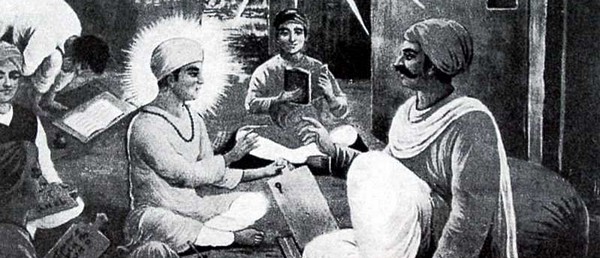
Verse 5 of the Advayataraka Upanishad states,
The syllable gu means shadows (darkness)
The syllable ru, he who disperses them.
Because of his power to disperse darkness
the guru is thus named.
Essentially, a guru is someone who leads the student from the darkness of ignorance into the light of knowledge. Although this characterization is an interpretative definition rather than an etymological definition, it suggests the figurative the emblematic power of the guru—the honored preceptor at the heart of traditional learning in the Indian culture.
The vast body of knowledge in ancient India was oral in nature. The Vedas, the Upanishads, and the other religious texts were imparted for many generations by word of mouth; only later were these ancient texts committed to the written word.
The oral tradition in India necessitated a living representative—the guru—who both personified and transferred the time-honored knowledge. Since the Vedic times, it was typical for a father to impart his scholarship to his son, thus propagating the age-old knowledge via parampara, signifying lineage, progeny, uninterrupted row or series, succession or tradition.
The principal elements of the oral tradition in India are:
- the guru (the teacher)
- the shishya (the student)
- the parampara, the conduit of knowledge in which the guru and the shishya discrete participants in a tradition which extends across generations.
Oral traditions for imparting knowledge are still in vogue in India today. Unsurprisingly, particular sciences and arts lend themselves such diffusion through direct contact between the teacher and taught. Ayurveda, the ancient system of medicine, is still taught through traditional teaching methods. Ancient Indian legends, fables, and myths come vividly to life grandchildren hear their grandparents recount them. By the same token, drama, theater, dance, and classical music depend on the ability of the masters to nurture these arts in the subsequent generations.